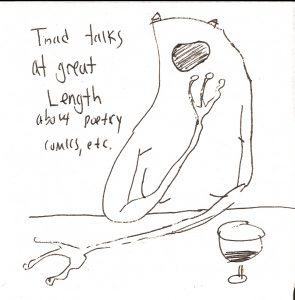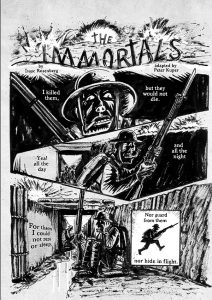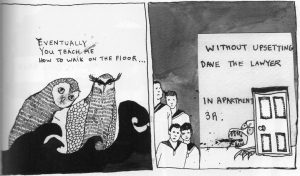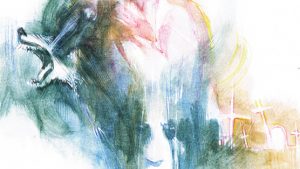
By Colorado Review Associate Editor Zach Yanowitz
When you’re a graduate student it’s often easy to forget that you have hobbies or any aspects of a personality outside of “being a graduate student.” You take several years away from your life to devote yourself fully to a specific academic pursuit, and it can feel irresponsible to spend time on anything else when responsibility is always lurking in the corner of your vision. Self-care is important, of course, but prioritizing my poetry MFA is the whole reason I’m here in the first place, other interests be damned.
Ever since childhood, one of my major hobbies has been reading comic books. From high-minded award-winning intellectual graphic novels, to cheap, fun superhero stories, I’ll read them all. I worked at a comic book shop for the three years between finishing undergrad and moving to Fort Collins for CSU. I loved this job: hanging out with my friends, getting into convoluted discussions with customers, helping new people fall in love with the medium, meeting my idols at conventions, getting to read unlimited free comics . . . it was an excellent gig. However, since starting grad school, between classes, teaching, grading, writing a thesis, and freaking out about the future, personal non-academic passions often get pushed to the wayside. I’ve been wondering exactly how I might be able to find a middle ground but it wasn’t until this year’s AWP Convention in Tampa that it finally started to feel like an option.
On the first day of the convention I attended a talk called “The Art of the Possible: Making and Teaching Graphic Narratives and Poetry Comics,” whose panelists included Drunken Boat‘s comics editor Nick Francis Potter, poet and artist Bianca Stone, and poet/illustrator/2017 Colorado Prize for Poetry winner Lauren Haldeman. Both the podium and the room were full of people just like me: academics and literary writers desperately seeking ways to combine their disparate passions with their own work, with their careers, and with their pedagogy.
Read any interview with the aforementioned writers for a better summation of their crafts and ethos, but my point here is that I felt reinvigorated. It is indeed possible to meld the low and the high, to translate poetry into a visual medium with goals both instructional and entertaining. There is both a community and a market for this. I left the panel all pumped up on potential and have spent much of the following weeks thinking about ways to incorporate comics into both my creative writing and composition classes.
 Just as I have been tricking my friends and family into loving comics for years, here are a few recommendations that I think might be good introductions to the medium for long-suffering academics like me hoping for some fresh air:
Just as I have been tricking my friends and family into loving comics for years, here are a few recommendations that I think might be good introductions to the medium for long-suffering academics like me hoping for some fresh air:
Above the Dreamless Dead: World War I in Poetry and Comics (First Second Books, 2014)
Edited by Chris Duffy, this collection features illustrated versions of classic trench poems by writers including Wilfred Owen, Siegfried Sassoon, and Isaac Rosenberg, illustrated by contemporary comics luminaries like Eddie Campbell (From Hell), Kathryn and Stuart Immonen (Nextwave, Runaways), and Garth Ennis (Preacher). The combination of images and poetic text makes something truly evocative and visceral, with the drawings not just direct representations of poetic lines but often delving off into gorgeous abstraction to conjure the chaos and brutality of the war.

Poetry Comics from the Book of Hours (LSU Press, 2016)
Written and illustrated by Bianca Stone (from the aforementioned panel), this collection features fully original art and text that juxtaposes the lyrical with the commonplace, the absurd with the sublime. Intensely emotional and often laugh-out-loud funny, Stone’s work is at the forefront of the new wave of poetry comics.
Intersect (Image Comics, 2015)
Written and illustrated by cartoonist Ray Fawkes (Constantine, Gotham by Midnight, Wolverines), this tragically-cancelled miniseries is the closest I can think of to a visual poetic experience. Nobody knows why, but something strange is happening in Detroit as citizens begin to melt and morph into the city itself. The main character shifts and blends between multiple bodies and genders and personalities while being stalked through the streets and sewers by a giant malevolent dog. The gorgeous watercolors blur the line between reader and protagonist, between setting and character. It’s weird and scary and beautiful and I cannot recommend it more.
Our world is increasingly hybridized and we owe it to ourselves to approach our chosen passions with as open a mind as possible. If it just so happens that I get to indulge my hobbies at the same time, then so be it. As Bianca Stone once said, “I want to complicate the fuck out of it.”